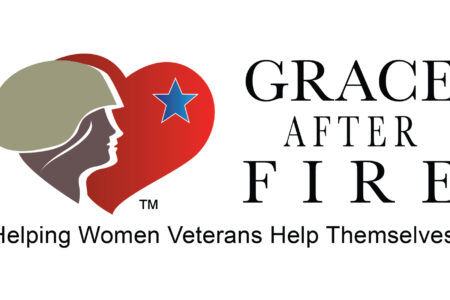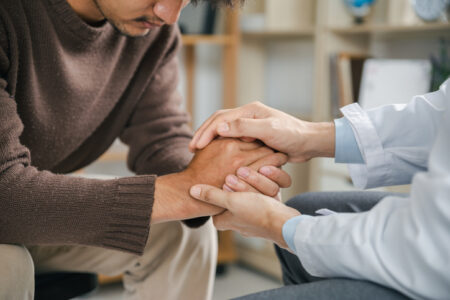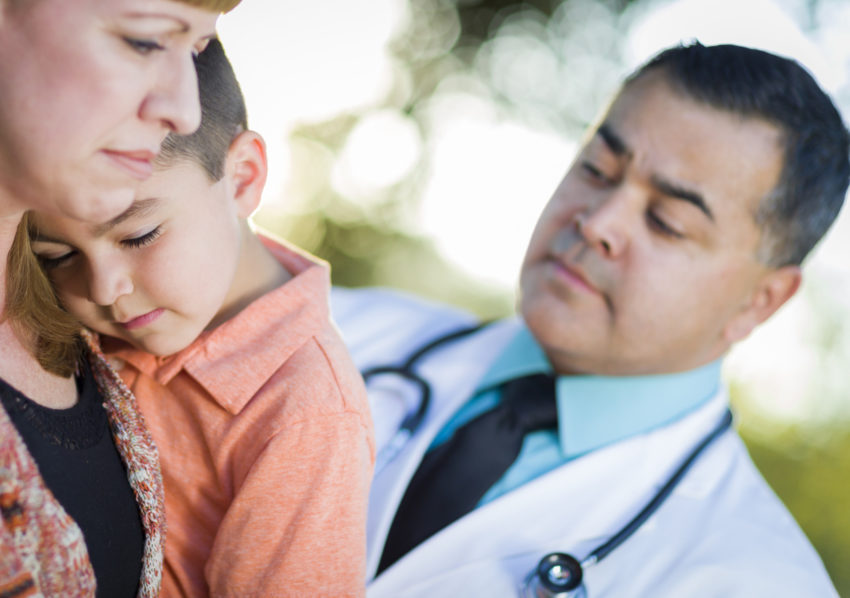
Share On Social!
This is part of the Salud America! The State of Latino Early Childhood Development: A Research Review »
The Importance of Preventing, Mitigating Trauma
Preventing adverse childhood experiences (ACEs) and/or mitigating their harmful effects is critical for improving prospects for early child development, and many programs and interventions have been implemented in this regard.
The American Academy of Pediatrics (AAP) recommends early screening for developmental and behavioral problems starting at age 9 months through 3 years.38
The Birth to 5: Watch Me Thrive! initiative is a federal effort to promote healthy child development through care collaboration and a system-wide approach, and provides screening resources for families, educators, and various healthcare providers.39
Home Visits Are a Key to Preventing ACEs
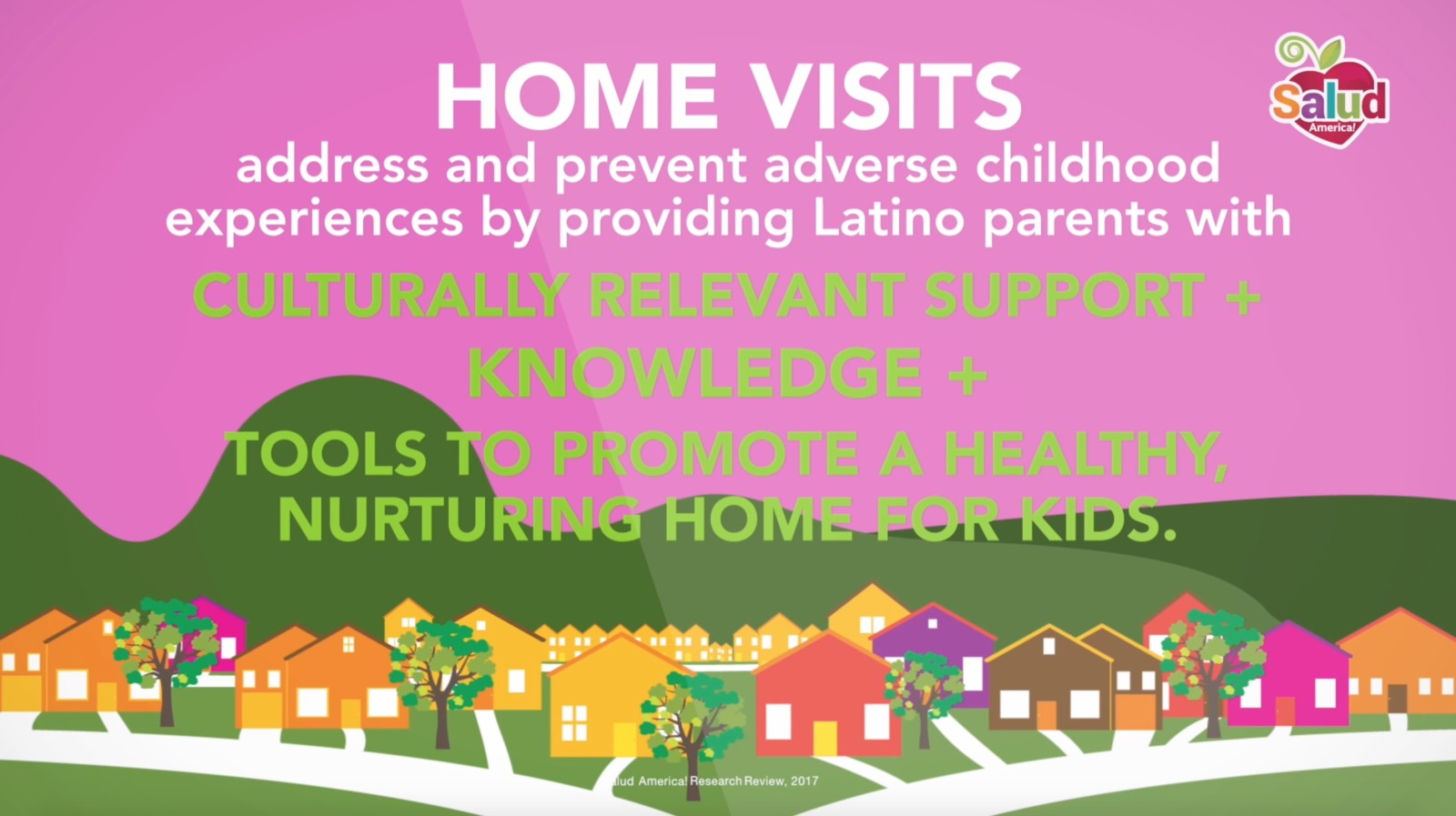 Home visits have been also shown to help prevent ACEs by providing parents and caregivers with the necessary support, knowledge, and tools to promote a healthy, nurturing home environment for their children.40
Home visits have been also shown to help prevent ACEs by providing parents and caregivers with the necessary support, knowledge, and tools to promote a healthy, nurturing home environment for their children.40
Proactively building trust, security, and resilience in families can help children process and overcome the effects of ACEs should they occur. Home visitors educate expecting and new parents about nutrition, sleep habits, and health care, do family and child assessments to screen for ACEs (e.g., through family map inventories [FMIs],41 and make referrals to programs such as WIC, Medicaid, heat and housing programs, and domestic violence services, as needed, to help them build a stable and healthy family. Moreover, culturally-appropriate home visits that engage family and community members are especially important for improving outcomes in Latino youth who may have mental health issues stemming from ACEs or other reasons.
For example, Project Wings Home Visits, a home visit program aimed at improving mental health awareness among Latinos has shown progress in reducing mental health issues in Latino youth.42 Family-based home visit programs are especially important for Latino families, as multiple family members may be living in the home and can play an important role in promoting a healthy environment for Latino youth.
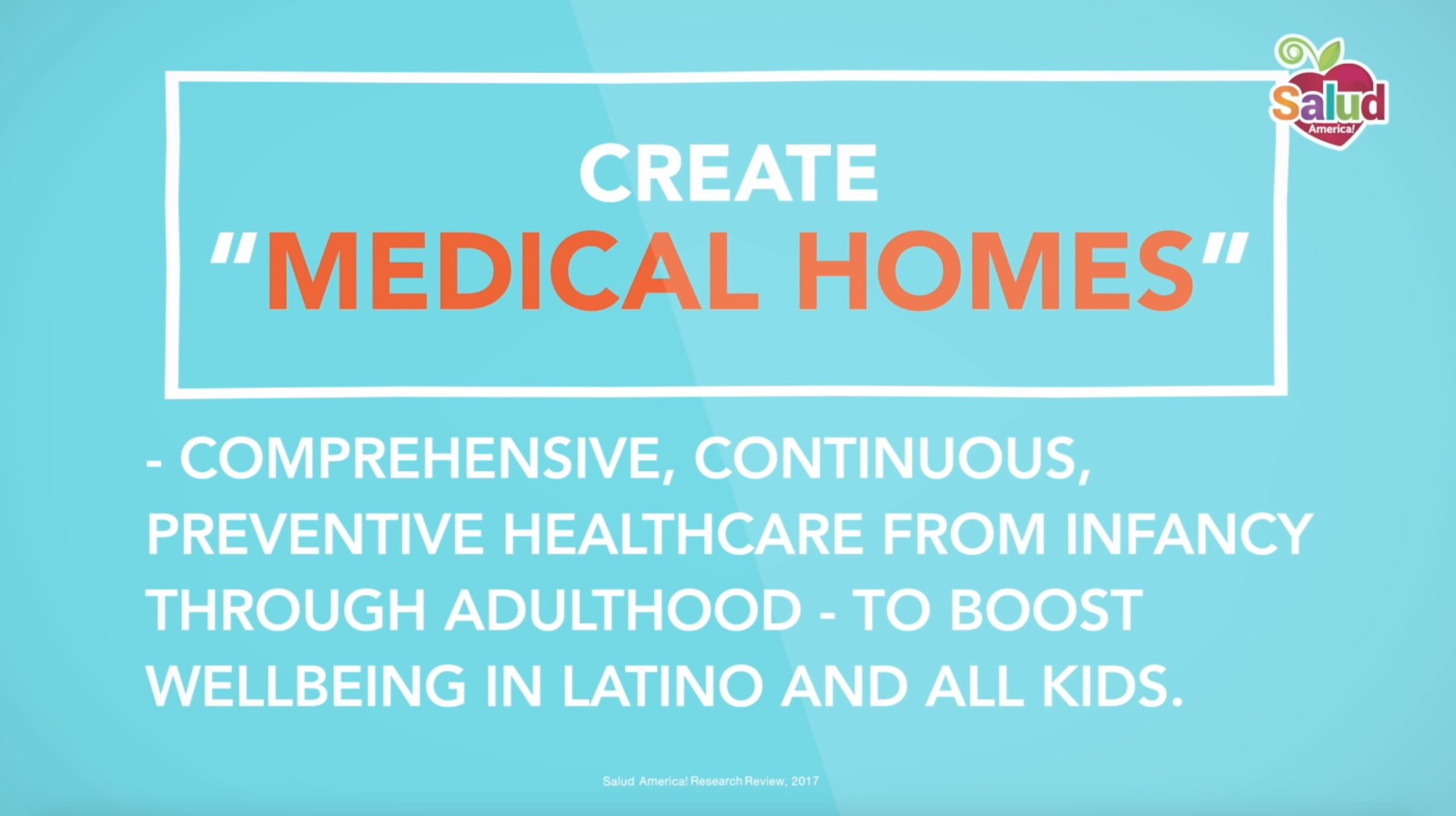 The pediatric medical home model, promoted by the AAP, has been studied as a potential intervention to mitigate the harmful effects of ACEs. The medical home model is a continuous and comprehensive approach to healthcare from infancy through young adulthood. In a study using data from the 2011-12 National Survey of Children’s Health, children were evaluated for physical and psychological health, social activities, educational achievement, ACE exposure and medical home access.43
The pediatric medical home model, promoted by the AAP, has been studied as a potential intervention to mitigate the harmful effects of ACEs. The medical home model is a continuous and comprehensive approach to healthcare from infancy through young adulthood. In a study using data from the 2011-12 National Survey of Children’s Health, children were evaluated for physical and psychological health, social activities, educational achievement, ACE exposure and medical home access.43
Children were considered to have a medical home if they met the following criteria:
- Having a personal doctor or nurse
- Having a usual source for sick and well care
- Receiving family-centered care
- Getting referrals for specialty care when needed
- Having effective care coordination when needed
Medical home access was associated with greater wellbeing in children.
Among children ages 6-11 who had experienced ACEs, access to a medical home resulted in higher levels of wellbeing compared with no access to a medical home, suggesting that medical homes may contribute to early ACE prevention, identification, and intervention. Importantly, children in minority groups and those living in poverty or without insurance are less likely to have a medical home than their white, more affluent, and insured counterparts,44 so strategies for improving access to a medical home in Latino children falling into these categories may be warranted.
Resilience, Screening, and Trauma-Informed Care
Supportive relationships and teaching resilience skills can mitigate the effects of ACEs. Children ages 6-17 who have had two or more ACEs but learned to stay calm and in control when faced with challenges are over three times more likely to be engaged in school compared to peers who have not learned these skills.37
Other interventions for preventing, identifying and/or addressing ACEs may include screening for ACEs during primary care visits and child welfare assessments, early care and education (ECE), mindfulness-based, mind-body approaches, parent-child psychotherapy, and family resilience programs, and quality and affordable childcare, among others.40,45–51
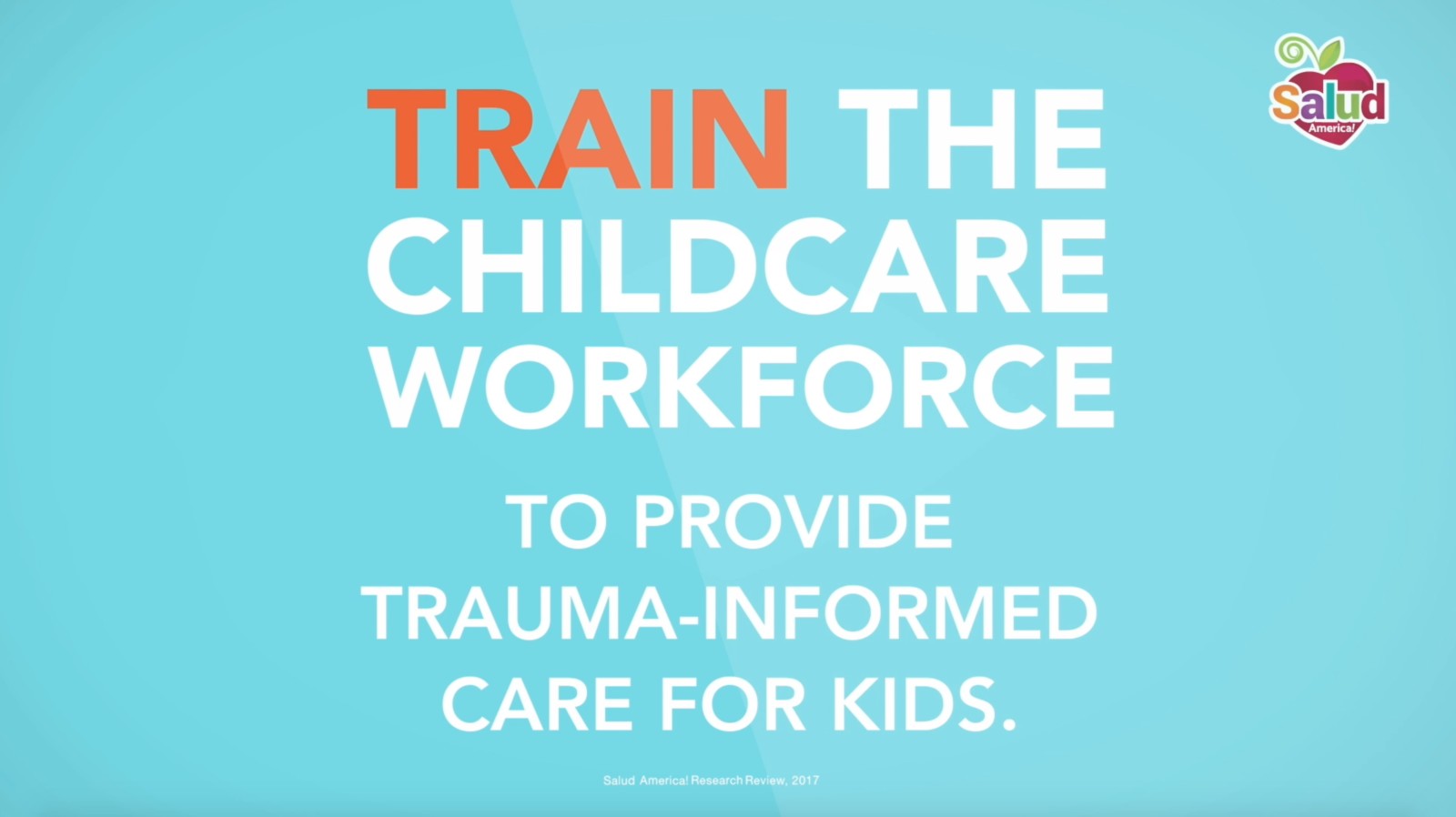 ECE programs and systems, for example, can provide trauma-informed care (TIC), which supports children’s recovery and resilience using evidence-based approaches.
ECE programs and systems, for example, can provide trauma-informed care (TIC), which supports children’s recovery and resilience using evidence-based approaches.
A report by Child Trends identified emerging TIC approaches:
- integrating trauma-informed strategies into existing ECE programs to support children in those programs who have experienced trauma;
- building partnerships and connections between ECE and community service providers to facilitate screenings of and service provision to children and families;
- implementing professional standards and training for infant and early childhood mental health consultants that emphasize TIC; and
- supporting the professional development and training of the ECE workforce in working with and supporting young children who have experienced trauma.52
Regardless of the intervention used, cultural sensitivity and relevance is important for addressing ACE issues that are specific to Latinos.53
More from our The State of Latino Early Childhood Development: A Research Review »
- Introduction & Methods
- Key Research Finding: Latino Childhood Trauma
- Key Research Finding: Healthy Lifestyles
- Key Research Finding: Early Care and Education
- Key Research Finding: Strategy—Improve Early Care
- Key Research Finding: Strategy—Boost School Readiness
- Key Research Finding: Strategy—Reduce Childhood Trauma
- Key Research Finding: Strategy—Incorporate Family Values
- Key Research Finding: Strategy—Support Moms
- Policy Implications
- Future Research Needs
References for this section »
37. Robert Wood Johnson Foundation. Traumatic Experiences Widespread Among U.S. Youth, New Data Show. RWJF (2017). Available at: https://www.rwjf.org/en/library/articles-and-news/2017/10/traumatic-experiences-widespread-among-u-s–youth–new-data-show.html. (Accessed: 25th October 2017)
38. American Academy of Pediatrics. Recommendations for Preventive Pediatric Health Care Bright Futures. (2015).
39. Marks, K. P. et al. Systemwide Solutions to Improve Early Intervention for Developmental–Behavioral Concerns. Pediatrics 136, e1492–e1494 (2015).
40. Davis, M. Home Visits Work: Let’s Make Them Universal. RWJF (2016). Available at: http://www.rwjf.org/en/culture-of-health/2016/11/home-visits-make-them-universal.html. (Accessed: 1st August 2017)
41. McKelvey, L. M., Whiteside-Mansell, L., Conners-Burrow, N. A., Swindle, T. & Fitzgerald, S. Assessing adverse experiences from infancy through early childhood in home visiting programs. Child Abuse Negl. 51, 295–302 (2016).
42. Garcia, C. et al. Development of Project Wings Home Visits, a Mental Health Intervention for Latino Families Using Community-Based Participatory Research. Health Promot. Pract. 13, 755–762 (2012).
43. Balistreri, K. S. Adverse Childhood Experiences, the Medical Home, and Child Well-Being. Matern. Child Health J. 19, 2492–2500 (2015).
44. McCarter, S., Jones, K. & Rager, K. M. Characteristics of Youth in the U.S. Receiving Services From a Patient-Centered Medical Home (PCMH). Soc. Work Health Care 50, 595–605 (2011).
45. Bethell, C., Gombojav, N., Solloway, M. & Wissow, L. Adverse Childhood Experiences, Resilience and Mindfulness-Based Approaches. Child Adolesc. Psychiatr. Clin. N. Am. 25, 139–156 (2016).
46. Casanueva, C., Smith, K., Ringeisen, H., Dolan, M. & Tueller, S. Families in need of domestic violence services reported to the child welfare system: Changes in the National Survey of Child and Adolescent Well-Being between 1999–2000 and 2008–2009. Child Abuse Negl. 38, 1683–1693 (2014).
47. Ghosh Ippen, C., Harris, W. W., Van Horn, P. & Lieberman, A. F. Traumatic and stressful events in early childhood: Can treatment help those at highest risk? Child Abuse Negl. 35, 504–513 (2011).
48. Kalmakis, K. A. & Chandler, G. E. Health consequences of adverse childhood experiences: A systematic review. J. Am. Assoc. Nurse Pract. 27, 457–465 (2015).
49. Marie-Mitchell, A. & O’Connor, T. G. Adverse Childhood Experiences: Translating Knowledge into Identification of Children at Risk for Poor Outcomes. Acad. Pediatr. 13, 14–19 (2013).
50. Merritt, D. H. & Klein, S. Do early care and education services improve language development for maltreated children? Evidence from a national child welfare sample. Child Abuse Negl. 39, 185–196 (2015).
51. Saltzman, W. R. The FOCUS Family Resilience Program: An Innovative Family Intervention for Trauma and Loss. Fam. Process 55, 647–659 (2016).
52. Bartlettt, J. D., Smith, S. & Bringewatt, E. Helping Young Children Who Have Experienced Trauma: Policies and Strategies for Early Care and Education – Executive Summary. (Child Trends, 2017).
53. Bernal, G. & Domenech Rodríguez, M. M. Advances in Latino Family Research: Cultural Adaptations of Evidence-Based Interventions. Fam. Process 48, 169–178 (2009).
By The Numbers
28
percent
of Latino kids suffer four or more adverse childhood experiences (ACES).

